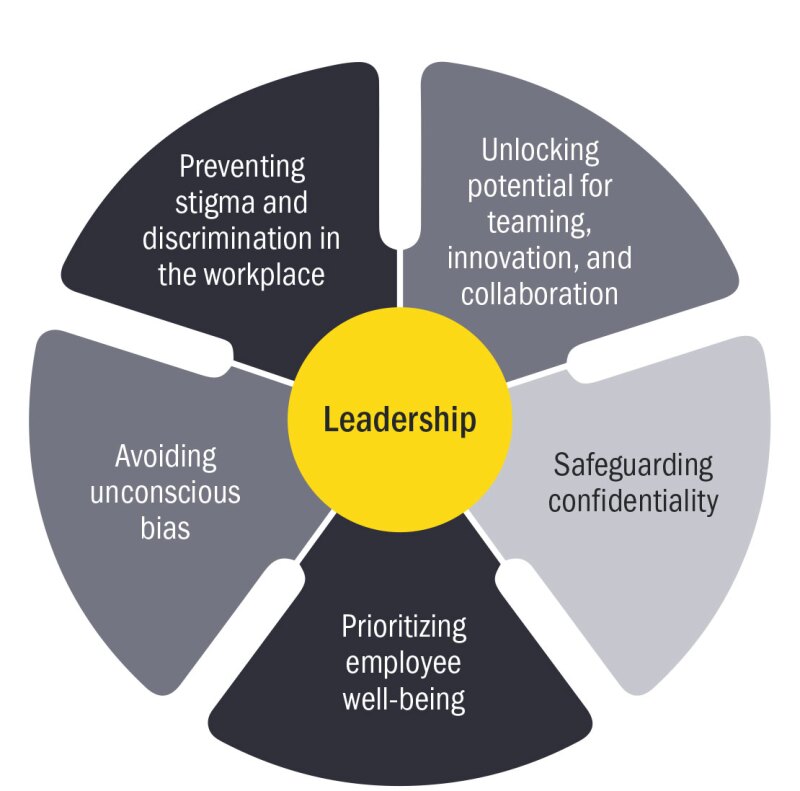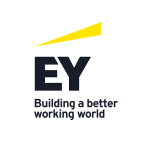The challenges from the COVID-19 global outbreak present critical people issues for organisations to assess and address. As organisations and their people confront the COVID-19 pandemic, one thing is becoming increasingly apparent: the impact of the outbreak will linger. To manage and mitigate the impact on their workforces, businesses must take immediate action; start planning for what comes next; and start thinking about what lies beyond.
The role of people and human resources (HR) functions in shaping the organisational response can hardly be overstated: employee health and well-being are crucial to the organisation's continuity, its resiliency and its capacity to reframe its future in the new normal to come.
Organisations should follow an iterative lifecycle of understanding and assessing the situation people are in and the movement, protection and enablement of individuals and teams.
The necessary tasks have been classified into five people themes that cover the range of topics, challenges and risks all organisations must manage.
Understanding the impact on people and priorities
Six steps are laid out to help define the people framework in a way that aligns with a business's purpose.
In the era of COVID-19, organisations must be clear on the values that align with their purpose and actively plan to protect these workforce values during these testing times. Good leadership and role-modelling will shine brighter than ever.
The non-negotiables are:
Top-down governance with decisive and creative leadership;
Mid-level management and team leadership;
Employee communications, policies and messaging;
Accessibility and usability of health and safety information;
Risk assessment and controls;
Risk and incident reporting and investigation;
Assurance, monitoring and reporting;
Agility, flexibility and empathy;
Employees equipped with the facts;
A culture of inclusion;
Adherence to local laws;
Organisations should operate within a clearly defined framework through each stage of the crisis to deliver workforce resilience. The goal is to establish and align leadership capability to assess, plan, decide and communicate people strategies. There are six steps:
1) Assess people exposures and risks – conduct an end-to-end risk assessment covering operational and geographical risks, health and safety impact, globally mobile employee implications, customer impact, cybersecurity, tax, payroll and reward impact. The end goal is a calculated risk index.
2) Define crisis scenarios – identify best-to-worst case crisis scenarios, designed to stress test the operation's ability to manage disruption and evaluate the severity of impact of existing gaps using risk assessment findings and data.
3) Identify workforce gaps – identify essential business functions, high-value assets, essential jobs or roles, and critical elements within the supply chain. Activate existing crisis management policies and protocols in each disruption scenario to identify gaps within the existing workforce model, including qualitative and quantitative impacts.
4) Develop a potential response – define potential response triggers to prevent crisis impact or enable agile responses to mitigate repercussions considering people, processes and technology factors.
5) Test the potential response – execute a simulation of crisis scenarios, particularly mass remote working, to test the effectiveness of defined potential responses to validate effectiveness against established success criteria.
6) Build intervention business case – build a resiliency intervention business case to implement validated crisis response triggers, including requirements, solutions and the value proposition.
COVID-19: Continuing to deliver on purpose through the crisis

Assess risk for local and globally mobile employees
Here are detailed criteria to help assess the risk and impact of the crisis on people:
Conduct a crisis risk assessment against their individual circumstances;
Review the immigration status of each globally mobile employee and any accompanying family members, including the visa status in their current location; the status of other visas held; and passports held, including their expiration date of passports, their physical location and their validity;
Identify any impediments or restrictions to travel, relocation or remote work in a location;
Consider any physical barriers, exit permits, flight bans, regulatory bans and other legal restrictions;
Assess the impact of relocation and any infrastructure requirements; and
Consider the costs, any impact on operations, any contractual obligations (including force majeure), and compliance with legal requirements while evaluating appropriate legal advice at every step.
Finally, develop an action plan that addresses current and future travel restrictions and lockdowns:
Prepare guidelines for working in each location and for traveling between sites and offices, including visitor and meeting protocols, visiting other locations and events;
Prepare a tailored lockdown strategy;
Consider appropriate protective measures and infrastructure requirements;
Determine action for each globally mobile employee and any accompanying family members;
Understand remote working restrictions where business travellers may be grounded and any flexible government COVID-19 policy; and
Assess the risk and potential impact to determine response measures and priorities:
Risk assessment of crisis in each location;
Personal/unique circumstances of individuals and any heightened risk factors;
The visa and/or work permit status and travel opportunity of each individual;
Travel impediments; and
Ability to make an immigration application amid government department closures and any flexible government policies in regards to an 'overstay'.
Use these assessments to make informed business decisions and to develop prioritised action plans.
Protecting the workforce
Here are three areas of focus for organisations looking to ensure employee health and well-being.
It is important to focus on the overall environment, communication and employee well-being. In times of business disruption, leadership and communication are key.
Environment
Ensure that all working locations are following guidance from local authorities on managing health and safety on sites, in offices, while traveling and while working remotely. Monitor the impacts on technology due to increased remote working; where needed, increase support and provision of IT support and equipment. Review the employee environment for different employee segments, ensuring the inclusion of those employees with no option for remote working.
Communication
Align the business's communication channels globally, regionally and locally while allowing for flexibility, evolving updates and messaging. Review communication media to ensure that all employees and relevant stakeholders – contractors, suppliers, consultants, clients and customers – are included. Provide guidance on alternative ways of working while protecting productivity, performance and safety for each work location. Review guidance on data security.
Employee well-being
Ensure that employees know where to find information, guidance and support, recognising the potential impacts on their physical, emotional and financial well-being. Encourage employees to continue to focus on self-development and learning, maintaining connectivity with colleagues and teaming while prioritising family and community commitments. Establish communication channels and forums that allow employees to express their concerns, be heard and resolve their most pressing issues. Start with the right tone from the top and make sure that prejudice and unconscious bias are addressed and eliminated.
Enabling people
These steps will help the workforce maintain productivity through extended remote working at scale.
Travel bans, collective and self-quarantines, corporate lockdowns and related implications for child and elder care are likely to lead to protracted periods where business continuity and productivity will depend on alternative, inclusive and flexible ways of working.
The transition to remote working at scale involves three stages: preparation, execution and experimentation.
Prepare
Is an organisation ready for remote working at scale? Start with a rapid people impact assessment, with heads of teams and support functions as well as remote working enablement leads. Then:
Identify and conduct an impact assessment for each employee segment (e.g. roles, shifts, customer-facing, operations). Agree upon needs and priorities for each group;
Test remote working with line managers and employee teams to adapt and gain buy-in;
Prioritise projects and other teamwork along with core business requirements;
Run dedicated team prep session(s) that:
Establish team rules of the road and call out ways of working, expectations, concerns or risks, and opportunities;
Test the technology or tooling and ways of working before remote deployment if possible, identify those who can be relied upon as experts; and
Map shifts and work patterns and agree upon ways to refine them as the team learns from experience. Make sure to include personal experience (caring for oneself and others, personal support networks) as a factor in the group's thinking.
For critical work or outcomes, consider a table top or role-play exercise to project into a failed or failing situation and work backward on how to prevent those things from happening;
Use tone at the top whereby leaders start referring to and using tools, apps and working channels in advance to raise the profile of what is to come;
Assess the associated risks around taxation, payroll, reward and cybersecurity; and
Implement special measures for functional and operating teams.
Execute
As the plan meets reality, organisations and their people will need to learn and adapt.
Clarify and prioritise work, removing non-essential items;
Adopt the right balance of working hours, taking personal commitments into account;
Check in with employees via team and one-to-one meetings; and
Ask these questions: What remains unchanged, what is changing and what is the impact?
Safety and well-being are paramount. Organisations should offer guidance on safe remote working and risk assessment and encourage employees to use the time they spent commuting on their self-development and well-being.
Executives should focus on tone from the top, which will make an enormous positive impact in terms of productivity, care and engagement. And they should enable their employees to express wider concerns as well as specific work issues.
Experiment
Once the organisation has established a working rhythm, it's time to fine-tune the new ways of working:
Ensure there is regular bite-size learning and knowledge share on use of remote tools and apps, led whenever possible by peer leaders or the "go to" people in the team;
Identify and allocate team roles to support the way in which work is produced and shared. Develop protocols to support new hire orientation, understanding of performance requirements and strategies to minimise unintended issues;
Give express permission to experiment and celebrate people trying things differently to improve working, employee engagement and outcomes; and
Find time to bring people together virtually with leaders to maintain culture and connectivity.
Maintain capability and capacity
By managing costs, it can help protect the organisation's resiliency and ability to transform.
Balancing cost in the short term, particularly in turbulent times, is critical to protecting long-term strategy. Impact will be felt around reduced revenue due to disruption of supply chain and customer purchasing, increased cost and loss of productivity due to absences, travel restrictions and mandatory quarantines, workforce absences due to long-term school closures, and unexpected spikes in healthcare costs.
We are not resilient when:
Workforce costs are not visible;
The workforce mix is not deliberate;
There are gaps in technology and processes to enable remote and automated work;
The workforce cannot adjust to dynamic conditions; and
Employees face financial ruin from absence or healthcare costs.
We are resilient when:
We understand the seven drivers of workforce cost;
We have the ability to remix staffing;
Workforce costs are visible;
We deploy virtual talent and leverage intelligent automation;
We have an agile, flexible culture; and
Employees have the needed tools and financial means to deal with the unexpected.
Given the increasing complexity and multiple factors involved in workforce strategy, a longer-term view of the likely impact of market volatility, in addition to the outcomes of multiple intervention strategies, will demand a more robust, quantitative workforce planning approach.
In order to provide a complete view of workforce resilience, the four key pillars of workforce planning and optimisation, namely capacity, capability, cost and composition (or the four Cs), should be considered:
1) Capacity – anticipating the future workforce size requires organisations to consider potential impact from leveraging digital technology like automation in existing roles and at the same time strategically redeploy displaced workers;
2) Cost – in order to remain competitive in light of ongoing disruption and generate value for the business, managing costs is imperative. It is critical to have the right mix and number of workers at the right place. Consider how the economic impact of the crisis may alter reward and retention policies;
3) Capability – the best way to prepare the prospective workforce is to understand the organisation's future skill requirements. This is critical for job holders because, as roles evolve, they will need to acquire new skills; and
4) Composition – to source critical skills that can be deployed rapidly across the business, organisations need to leverage the wider talent ecosystem. This is driven by scarcity of skills, emergence of new talent platforms and changing generational expectations.
Summary
The global COVID-19 outbreak presents significant challenges for an organisation's workforce. By putting people first, creating safety and enabling new ways of working, companies can navigate this highly disruptive period and emerge stronger and more resilient in the long-term.
As COVID-19 lockdowns lift at varying speeds across the world, a successful reopening and return to the physical workspace requires companies to operate in two gears that move seamlessly across each other. Gear one manages the trusted transition back to the physical workplace with a focus on mitigating risks for employees and customers. Gear two drives transformation based on the lessons learned through the COVID-19 crisis into a reimagining of work for the future. Shifting back and forth between the gears in response to external environmental changes will require a delicate management of risks, and fluidity to constantly model, iterate and pivot.
Click here to read the entire 2020 EY-ITR Asia Pacific Guide
Darren Gibson Partner T: +61 2 9248 4970 Darren Gibson is a partner who leads the Asia-Pacific people advisory services, which focuses on delivering people strategy. This includes mobility and immigration, remuneration and reward, human resources (HR) technology and systems, organisational performance and design as well as change management. He is based in the Sydney office. With more than 25 years of experience, he has worked on various aspects of HR, including operational, tactical, planning and strategic levels. He is a global thought leader in talent management, workforce planning, industrial relations and rostering. Darren holds a master's degree in human resource development from the University of Sydney. |












